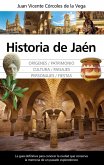The geohistoric region of the Strait of Gibraltar is an area of great interest for human evolution, as a place of passage and mobility of prehistoric societies between North Africa and southern Europe. The natural marine resources of this Atlantic-Mediterranean environment, from the Algarve to the Bay of Malaga, have been exploited by Palaeolithic, Neolithic, protohistoric and ancient societies. This book, coordinated by four prehistorians from the University of Cádiz who have been working in the region for many years, addresses, from a historical and diachronic perspective, the record of economic and social practices that have been evident on both shores of the Strait of Gibraltar for at least 300,000 years, and which have come to shape a veritable way of life for these populations. It is a subject that has had a far-reaching impact on the existence of shellfishing and fish gathering practices by Neanderthal human groups in the south of the Iberian Peninsula and by anatomically modern humans in North Africa. Throughout the development of the Upper Palaeolithic, these practices were very important in the lifestyle of these hunter-gatherer societies, which had this strong component of exploitation of shellfish, fish or beached whales, which came to form an important part of their diet and from which they obtained numerous resources used in daily life. The graphic and artistic manifestations of these societies have been expressed in various caves. In stages linked to Neolithic societies with an agricultural mode of production, these practices continued to play a substantial role in the diet of these groups. The book offers a reflection on this rich heritage that deserves to be known, preserved and disseminated as an important part of our history.
Hinweis: Dieser Artikel kann nur an eine deutsche Lieferadresse ausgeliefert werden.
Hinweis: Dieser Artikel kann nur an eine deutsche Lieferadresse ausgeliefert werden.








